California Dreaming

Snowflakes merrily dancing down and temperatures threatening to reach freezing outside, yesterday made it difficult to believe the calendar’s statement that spring has officially arrived in the Hudson Valley. An even bitterer pill to swallow was the fact that a mere week ago I was basking in sunny Southern California. Given the miserable weather we are experiencing this weekend, it feels like a distant dream (cue the harp and hazy lens). In addition to getting a brief respite from our dreary March, I was fortunate enough to be able to squeeze in two quick garden visits while there. Each was very different from the other, but both attest to what dreams AND big money can accomplish.
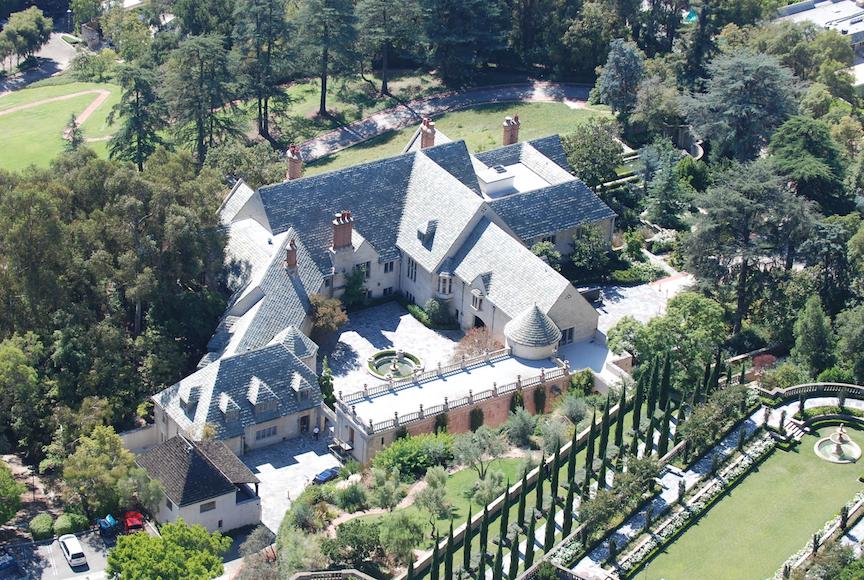
The first was at the Greystone Estate in Beverly Hills. Though they may not be conscious of it, most people are already familiar with the place from one of the scores of movies and television shows that have been shot there. Just as fascinating as any of the fictitious scenes filmed there are the real characters associated with its history. It was built in 1928 for vastly wealthy oil tycoon Edward Doheny as a gift for his son Ned and his family, at a cost of nearly three million dollars, reputed to be the most expensive private homes constructed in California up to that time. Much to the pious Edward’s chagrin the Doheny name was soon to be tabloid fodder, when mere four months after moving into the mansion with his wife and five children, the bodies of Ned Doheny and his personal secretary Hugh Plunket were discovered in one of the guestrooms, shot in an apparent murder-suicide. Just who shot who has never been definitively proven, and the official accounts of the incident were very murky. While today one jumps to the perhaps more salacious conclusions, conventional wisdom indicates that the deaths were connected to the teapot Dome scandal in which the Doheny’s and Plunkett were involved. Ned’s widow continued on in the house for nearly thirty years, becoming one of Beverly Hills grande dames, but I digress*, back to the gardens, which along with the mansion and approximately 18 acres are today a public park.

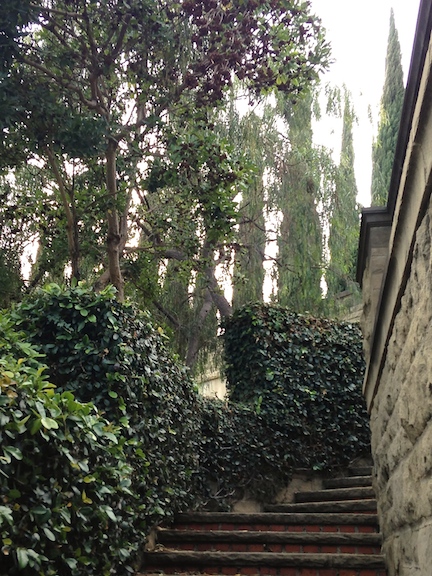
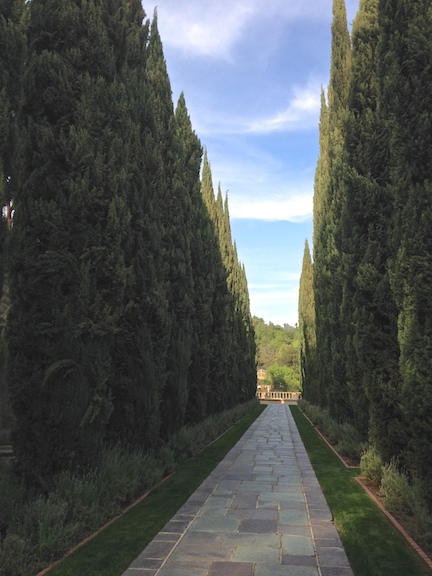
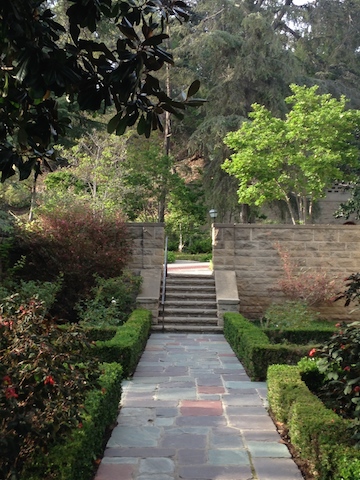
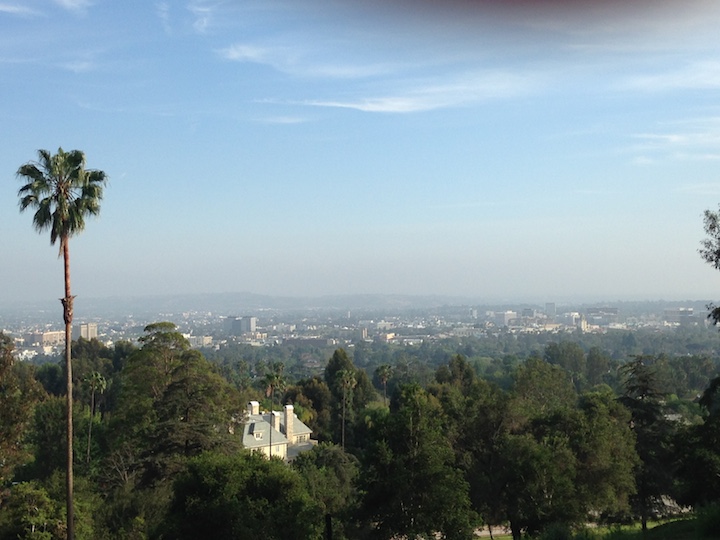
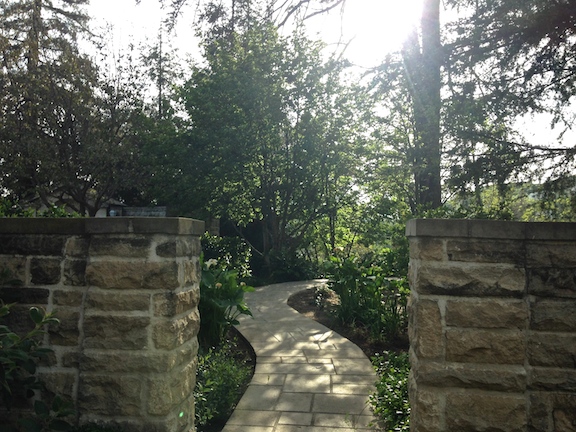

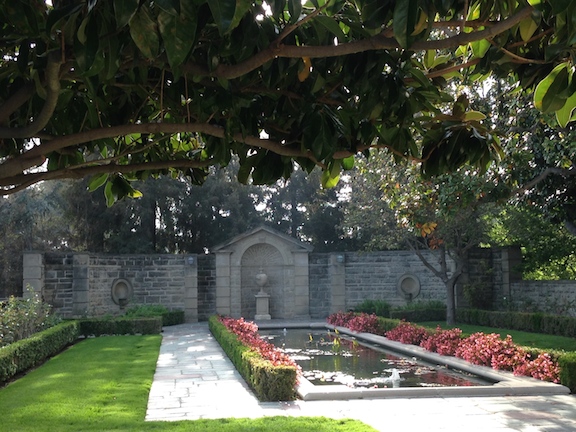



The gardens are a tour de force of tradional garden design, inspired by English and in particular Italian antecedents, taking maximum advantage of their hillside setting. A series of steps, stairs, alleespaths and gates guide one through a multiplicity of terraces and garden rooms envisioned to create a wide range of experiences, from intimate to expansive including a woodland strollpeeks into courtyards, and a contemplative reflecting pool. It was particularly interesting to see how the massive architectural elements of the gardens hardscape were softened by niches, arcades, and different surface treatments in addition to theshrubs and plants.Almost as enjoyable was finding this family or turtles enjoying the sunny afternoon.
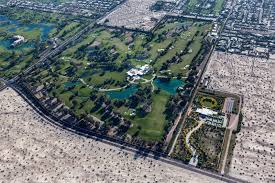
A couple of days later, I had a very experience at Sunnylands in Palm Springs. Though its history is not nearly as scandalous as that of Greystone, the former winter estate of Walter and Lenore Annenberg makes up for it by the list of luminaries who visited the couple there, including more Presidents, Royalty and heads of State than you can shake a stick at.
The estate has only been open to the public for a few years, and reservations to tour the mid-century house surrounding grounds are next to impossible to obtain without prior planning. Luckily, a portion of the estate containing the gardens and visitors center is open to the general public free of charge on weekends. On the the road heading towards the entrance, one drives along a wall that goes on forever, offering tantalizing glimpses at intervals of what appears to be a massive upscale golf club. It is only when reaching the gates that one realizes that they actually contain Sunnyland’s 200 acres of greenery in the midst of the Rancho Mirage desert.

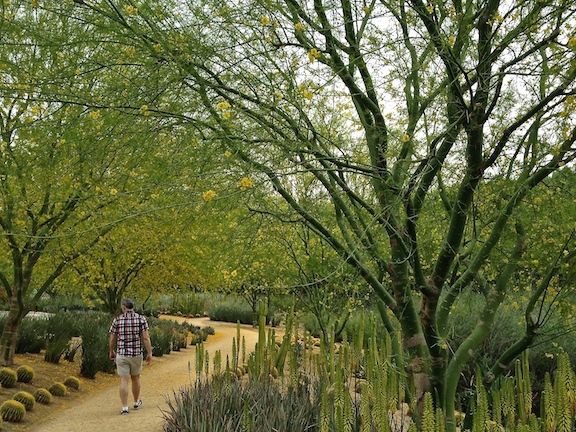


The nine and a half acres of gardens were designed by landscape architect James Burnett who used Van Gogh’s “Olive Trees” along with Lenore Annenberg’s preference for the color yellow for insipiration. As opposed to the architectural and linear sightlines of Greystone, the gardens at Sunnylands employ a more painterly, impressionistic approach for the visitor experience. A meandering path leads on through washes and of color (heavy on the yellows, greens, and earth tones). I have to admit I am not a plantsman by nature, (an agave is an agave is an agave to me), or particularly contemplative during a quick visit, so it took a little more time for me to appreciate the subtle variations in color texture and feeling and mood created by the garden. Once I slowed my pace a bit and stopped looking for the next “big thing” around the corner however, my appreciation for the garden grew immensely.
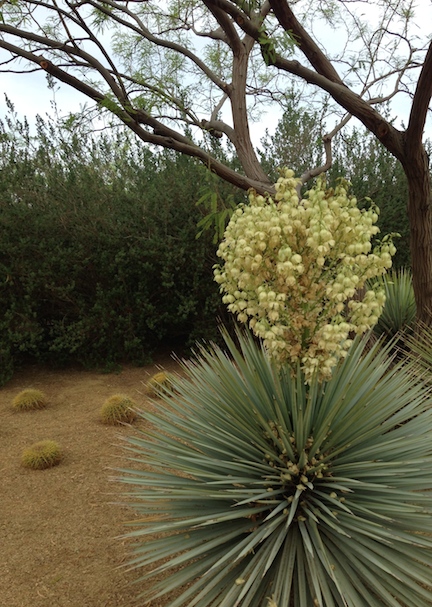
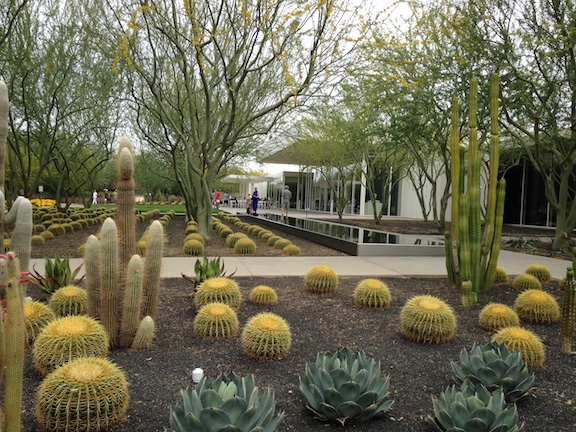
Within the immediate surroundings of the visitors center, the casual paths and casual drifts gave way to more formal geometric designs, but employed the same plant materials which showed how the same succulents worked in both formal and traditional settings to maximum effect. Perhaps due to the garden’s emphasis on cacti and succulents, it’s natural appearance, or emphasis on sustainability and eco-friendly design in the Annenberg Foundation’s literature, the enormous cost to recreate Van Gogh’s “Olive Trees” in the midst of desert might not be as immediately apparent, but it is no less impressive in its own way than classically-inspired fantasy at Greystone. This post barely scratches the surface in describing these two fascinating places, well worth visisting on any trip to the area. Fro more information, I encourage you to visit * Greystone's or Sunnyland's websites.



